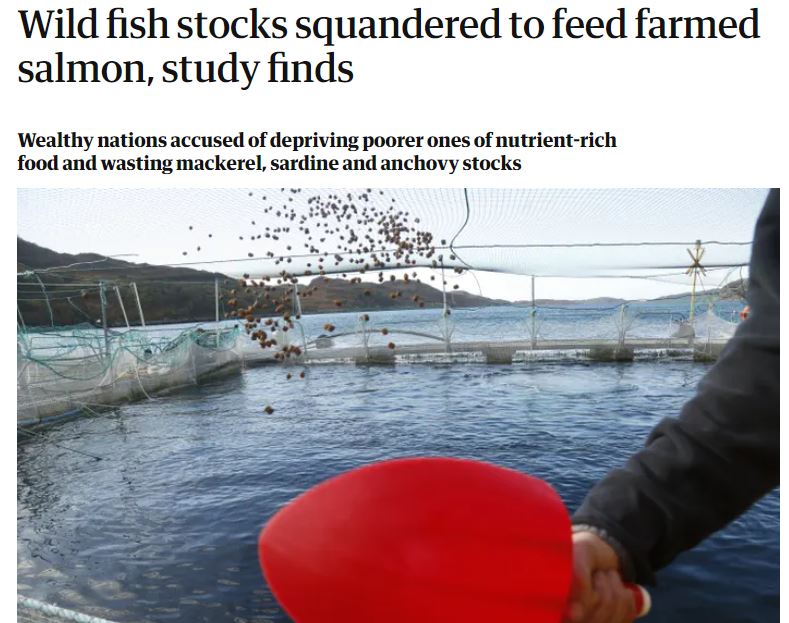
Stór hluti af fóðri eldislax eru mjöl og olíur sem koma frá veiðum á villtum fiski. Ný rannsókn sýnir að 99 prósent af steinefnum, vítamínum og fitusýrum frá þessum villta fiski fer í súginn í laxeldi. Með því að nýta villta fiskinn í vörur til manneldis, frekar en í fóður fyrir eldislax, væri hægt að auka framleiðslu sjávarafurða til að seðja hungraðan heim um 6,1 milljón tonna á ári og um leið skilja eftir óveidda stofna í hafinu sem nemur 3,7 milljón tonnum.
Eins og ítrekað hefur verið bent á á þessari síðu okkar þarf prótein og næringarefni sem duga í þrjár til fjórar máltíðir fyrir fólk, til þess að framleiða eina máltíð af eldislaxi. Þetta er hrikaleg nýting á náttúruauðlindum.
Í umfjöllun The Guardian um rannsóknina segir meðal annars:
„Lia ní Aodha, of Feedback Global, which worked on the report said: “Salmon farming is a good example of how deeply inefficient and inequitable the global food system is. Much of the nutrient-rich fish used to feed farmed salmon is sourced from regions in the global south, where food insecurity is endemic, while the salmon is mainly sold to consumers in high-income markets in Europe, North America and parts of Asia.”
Feedback, which campaigns for sustainable food supplies, worked with researchers from the universities of Cambridge, Lancaster and Liverpool to investigate feed sources – and the nutrients transferred from them – in the Scottish salmon industry, Britain’s largest food export. They calculated that in a single year, 179,000 tonnes of salmon produced in Scottish aquaculture farms consumed fish meal and fish oil produced from 460,000 tonnes of wild-caught fish, 76% of which was edible.
In their paper, published on the research forum Plos Sustainability and Transformation, they said: “Most edible wild-caught fish species in [fish meal and fish oil] have higher concentrations of key micronutrients than farmed salmon, and for some of these micronutrients, as little as 1% is retained in farmed salmon.“
